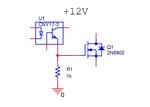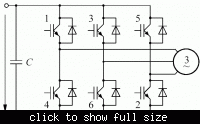stoyanoff
Full Member level 4
I`ve made a 3phase frequency invertor. The turning speed is good, but there are a lot of vibrations and distortion in the engine. I`m using PWM modulated pulses 500us each. For 50Hz this must be around 2kHz changing frequency. My dead was 2.2ms but I dropped it to 1.3ms without any result.
I`ve tried with mid alignment of the pulses. It became better but not enough. The engine is still shaking and gives uncommon sound. I`m using PIC 18F4620 controller.
Any ideas???
I`ve tried with mid alignment of the pulses. It became better but not enough. The engine is still shaking and gives uncommon sound. I`m using PIC 18F4620 controller.
Any ideas???
Last edited:


